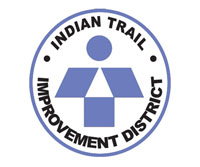The Indian Trail Improvement District Board of Supervisors approved a set of standard roadway policies on Wednesday, designed to be the first step in collecting money to cover necessary roadway improvements due to encroaching development.
ITID Engineer Jay Foy said the standard, which the board asked staff to develop, uses terms that set apart district roads from those used by other government agencies in order to avoid confusion.
“We specifically avoided typical terminology like arterial or collector road,” Foy said. “We don’t want them to be confused with county roads, state roads or federal roads.”
Instead, the standard uses “major roads,” “minor roads” and “neighborhood roads.”
“The major and minor have specific design standards we want to have,” he said, explaining that the standards will eventually be put into a policy.
“This is not a policy yet,” Foy said. “The first step is to accept the three roads or three sections, and then the second step will be to recommend a future thoroughfare map.”
He pointed out that no specific major, minor or neighborhood roads had been named yet. “This is the first baby step based on everything that has been done since the inception of the Minto property,” Foy said, explaining that it will get ITID into a legal bargaining position to get financing for the necessary road improvements.
Consultant Joe Capra said the plan is to depict roads that handle neighborhood traffic and roads that can handle collector or heavier through traffic.
“We’re going to make the roads more structurally sound,” Capra said, explaining that the district standard does not require the asphalt thickness of county standards. “Because of the traffic that we have seen coming through, the traffic reports that we reviewed from all the developments and everything, there are some roads that we believe that these developers, or the county, or whoever, should provide a better structural number so that they can withstand the traffic that they are telling us that they are going to put on them.”
He explained that the traffic standards are the evolution of a traffic-calming study he did in 2014 that became more of a traffic safety study, which identified the location of traffic accidents over five years.
“I’m not telling you we’re adopting a roadway plan,” he said. “We’re just trying to tell you how we came up with the idea of being major, minor and neighborhood roadways.”
Capra displayed a map of the district with all the anticipated developments and how they will affect district roads, based on traffic studies that the developers submitted to the county for approvals.
“We basically looked at these developments and the trips they’re telling us are coming onto our roads,” he said. “We may not have agreed with some of these roads that are impacted, but the fact of the matter is that the county is approving them based on this, and we have made comments to this on numerous occasions on what roads we think they are going to impact.”
Capra said the district-paved roads are built to a typical section, and he used Hamlin Blvd. and 60th Street as examples of roads built to the district standard with a thinner asphalt surface that are expected to get a lot more traffic.
“A road that we see is Persimmon Blvd.,” he said. “Whether we like it or not, that is a road that the county has shown that is going to get a lot more traffic.”
He added that the approval of Avenir will put a lot more traffic on 140th Avenue North.
“I’m not telling you what I like and what you like,” he said. “I’m telling you what they’re telling us.”
Capra said they are trying to improve major roads to county standards.
“They are really building them to handle traffic,” he said. “They have put a thicker roadway section and they have put a shoulder that is paved.”
He explained that the county puts a 2.5-inch-thick asphalt pavement on arterial roads, where the district uses 1.75 inches. The county uses a 6-foot paved shoulder, while the district has a 6-foot stabilized shoulder with sod on it. The county also has sidewalks on both sides, whereas the district has a sidewalk on one side of some of the roads, but also has swales on both sides.
“There is a difference in how the county builds its roads and how we have built our roads, and there is a good reason why we have built them to this standard, because they were just neighborhood roads, rural neighborhood roads that were not planned to be handling the traffic that can come out here,” Capra said.
He said the developers are proposing two-lane roads, but the traffic will be not only heavier, but traveled by heavy trucks.
Also recommended is to increase the elevation of major roads to the level that will handle a 25-year storm.
“The point is we’re not only addressing the thickness of roads, we also want to place them at the right elevation so they don’t flood,” Capra said.
He said the minor roads will probably keep the same district standard.
Supervisor Michelle Damone made a motion to accept the report, which carried 4-1 with Supervisor Jennifer Hager opposed.








